GMC Sierra SLE Hybrid Review
I find the average pickup truck’s buckboard ride and apple cart handling a constant source of wonder. If they can put a man on the moon, why can’t they put the lunar rover’s suspension on a pickup truck? Yes, I know: if you want to carry heavy things, coil/leaf suspension is your only option. But why would anyone who doesn’t schlep stuff for a living actually choose to drive a pickup?
Dunno. What I DO know is that rough-riding, foul-handling pickups are America’s favorite form of personal transportation. And the US (or at least the US media) is hybrid crazy. So it was only a matter of time before Detroit answered its petro-political critics by building a hybrid pickup truck. First out of the blocks: the GMC Sierra Hybrid. The beauty of it– well, the beauty of the concept– is inescapable. Fit a gas-electric hybrid motor to a pickup, boost its gas mileage by a respectable margin, and voila! A politically incorrect gas-guzzler becomes a deeply desirable statement of environmental consciousness– with a healthy shot of blue collar chic at no extra charge. Yes, now even redneck America can have their cake and the Kyoto Agreement too!
OK, back to reality. First of all, the GMC Sierra Hybrid is not a real hybrid. Its Panasonic lead-acid batteries don’t provide propulsion; the sub-system only powers the Sierra when it’s stationary. In other words, when the pickup comes to a halt, so does its internal combustion engine. The batteries kick-in to power all the electrical goodies (AC, lights, radio, windows, etc.). Then, when you take your foot off the brakes, the V8 spools-up, and away you go.
C’mon, did you seriously expect a 42-volt battery to provide motive force for a 7000lbs. pickup truck with a 9200lbs. towing capacity? What we have here is no more or less than a standard GMC Sierra pickup truck with a battery-powered electronic stop – start system that recharges itself with energy generated by the brakes. A system that also shuts off fuel to the powerplant whilst coasting, and smoothes out the resulting engine vibrations. The technology is certainly impressive, but the driving experience is prosaic. Stomp on the quasi-hybrid’s gas pedal and you get the same response as you would in a regular Sierra. Its 295hp Vortec 5300 propels the pickup to 60mph in under eight secs. Again, I’m no fan of the way this (or any) pickup truck handles bumps and bends, but there’s no question that the General’s demi-hybrid has enough grunt to leave a tree hugger’s Toyota Prius for dead.
Things start to get hinky when you take your foot off the gas. There’s a strange sensation of increased drag– something between engine braking and the feeling that you’ve run out of gas. The fact that the slowing effect is caused by the fuel-saving engine cut-off feature is morally comforting, but dynamically distracting. Braking feel, as the stoppers reclaim energy for the batteries, is similarly peculiar. Fortunately, braking performance isn’t affected.
When you bring the Sierra to a full stop, the oil pressure indicator dies. It’s the only visible sign that the Sierra’s 5.3-liter V8 has gone into hibernation. Physically, there’s a slight death rattle as the Vortec checks out. When you take your foot off the brake, another tiny shudder announces the return of normal service. The switch between life support and impulse power is quick, but it’s no more seamless than a softball. If you’re in a hurry, you could even call it annoying. Of course, eco-conscious consumers are happy to put up with a few “quirks” to earn their environmental brownie points. Which brings us straight to the heart of the matter: what’s the mileage? General Motors claims that their Sierra Hybrid is 10 – 15% more fuel efficient than its traditionally-powered sibling. Impressed? Take a closer look…
First of all, despite all my best efforts at accelerative restraint, I achieved no more than a 10% improvement over a similarly equipped, “normal” Sierra. That’s 16.5mpg vs. 15mpg– not exactly the kind of fuel economy that can change American foreign policy. Second, if saving the planet takes second place to protecting your financial resources, you’ll need about eight years to recoup the cost of the hybrid system: $6900 with mandatory optional (?) equipment. And lastly, where the Hell are the hybrid decals?
The Sierra Hybrid should be plastered with HUGE graphics trumpeting its high-tech green credentials. The two small hybrid door badges don’t cut it, not by a long chalk. Call me cynical, but what’s the point of being socially responsible if society doesn’t know about it? Anyway, did I mention that the Sierra Hybrid is an electric generator? Its AC sockets can provide power for up to 32 hours. Now THERE’S a good reason to buy one.
More by Robert Farago
Latest Car Reviews
Read moreLatest Product Reviews
Read moreRecent Comments
- Arthur Dailey We have a lease coming due in October and no intention of buying the vehicle when the lease is up.Trying to decide on a replacement vehicle our preferences are the Maverick, Subaru Forester and Mazda CX-5 or CX-30.Unfortunately both the Maverick and Subaru are thin on the ground. Would prefer a Maverick with the hybrid, but the wife has 2 'must haves' those being heated seats and blind spot monitoring. That requires a factory order on the Maverick bringing Canadian price in the mid $40k range, and a delivery time of TBD. For the Subaru it looks like we would have to go up 2 trim levels to get those and that also puts it into the mid $40k range.Therefore are contemplating take another 2 or 3 year lease. Hoping that vehicle supply and prices stabilize and purchasing a hybrid or electric when that lease expires. By then we will both be retired, so that vehicle could be a 'forever car'. Any recommendations would be welcomed.
- Eric Wait! They're moving? Mexico??!!
- GrumpyOldMan All modern road vehicles have tachometers in RPM X 1000. I've often wondered if that is a nanny-state regulation to prevent drivers from confusing it with the speedometer. If so, the Ford retro gauges would appear to be illegal.
- Theflyersfan Matthew...read my mind. Those old Probe digital gauges were the best 80s digital gauges out there! (Maybe the first C4 Corvettes would match it...and then the strange Subaru XT ones - OK, the 80s had some interesting digital clusters!) I understand the "why simulate real gauges instead of installing real ones?" argument and it makes sense. On the other hand, with the total onslaught of driver's aid and information now, these screens make sense as all of that info isn't crammed into a small digital cluster between the speedo and tach. If only automakers found a way to get over the fallen over Monolith stuck on the dash design motif. Ultra low effort there guys. And I would have loved to have seen a retro-Mustang, especially Fox body, have an engine that could rev out to 8,000 rpms! You'd likely be picking out metal fragments from pretty much everywhere all weekend long.
- Analoggrotto What the hell kind of news is this?



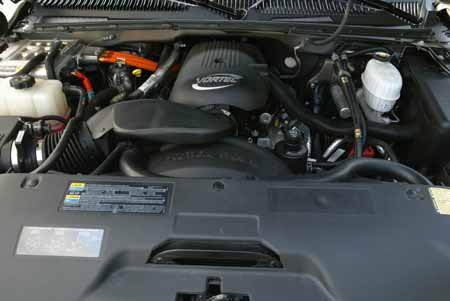



















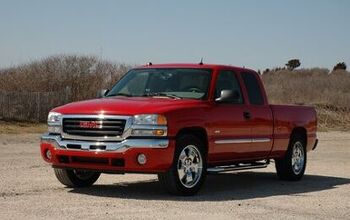
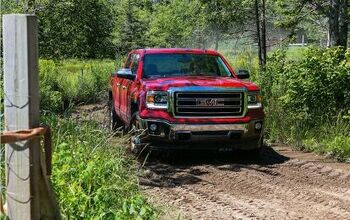

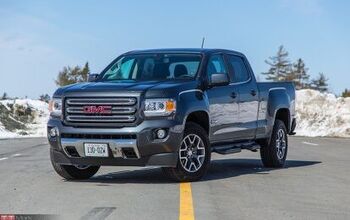




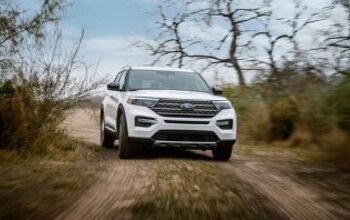





Comments
Join the conversation
This is so GM. Push big pickups. Lobby trhe Gov to defeat increased fuel efficiency. Then throw half assed, largely sybolic engineering and brag about it for marketing purposes. Hybrid? Here barely if at all. Cylinder deactivation! Yeah right. In either case these vehicles are still inexcuasable gas hogs. The put lipstick and deodorant on a pig and brag about it. I feel badly for those who work for GM, but as a company they are getting the fate they richly deserve.
PS . . pardon my horrible typing